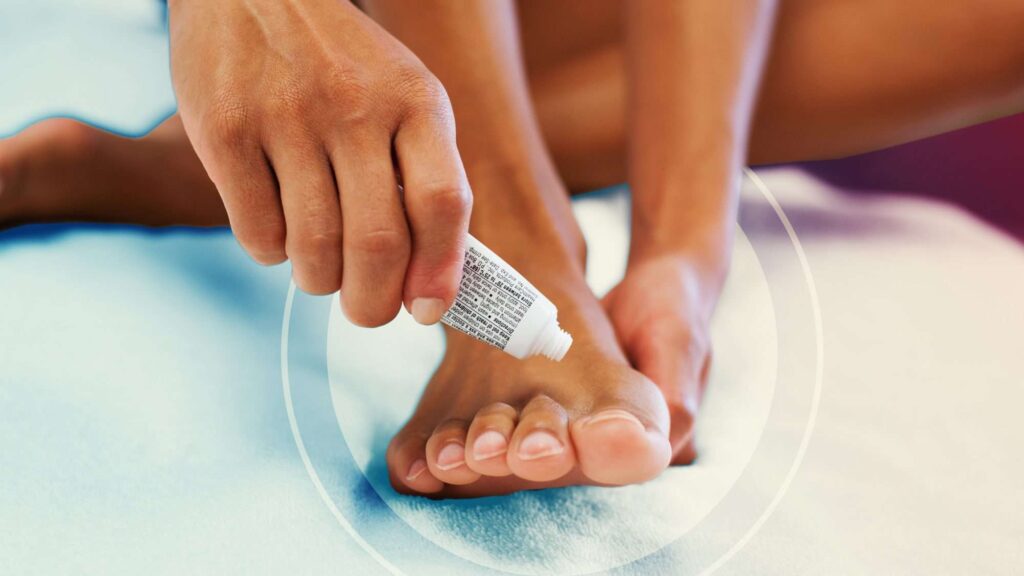Toes- we really don’t give them much thought until the summer months when we can finally shed our boots and don our favorite flip flops. For some, though, they are a reminder of an embarrassing truth.
Toenail fungus is common, but it is also unpleasant to look at and live with. In fact, 92% of people diagnosed with toenail fungus say that they experience negative emotions because of it. Another 44% say it hurts their self-image. It is no surprise that research has since found that toenail fungus actually has a significant impact on quality of life.
But it doesn’t need to be that way. You have options for treating your toenail fungus and we will help to guide you through the difficult process of keeping it from reoccurring too. To start this journey, though, you need to know exactly what you are up against and what to expect for your future.
See Also: how to treat chronic pain
What Is Toenail Fungus?

Nail fungus is more properly known as onychomycosis or tinea unguium. It is essentially the growth of fungus typically in the toenail bed or on the toenail itself. It’s a very common diagnosis that impacts the integrity and appearance of your toenails, although it is often painless and odorless in its earlier stages. Your toenails are important because they protect the soft tissue on the top of your toes, especially while walking and wearing shoes. It can be very painful to have this soft tissue exposed because the toenail fell off or to have the toenail warped into an uncomfortable position (and toenail fungus can cause both to occur). More often than not, though, toenail fungus affects more than just the nail itself, which is why it is a major health concern.
Toenail fungus likes to spread. It can migrate to your skin and seep down between your toes causing althete’s foot (or tinea pedis as it’s known in the medical world). Or the toenail fungus can spread to your other nearby toenails. The fungus also likes to grow deeper into your body causing the nail itself to fall off. Overall, it’s very unpleasant to have. But there is hope and treatment available. However, it is important to know now that some do not believe there is a true cure for toenail fungus. Once someone has it, it tends to come back over and over again. That is why it is important to treat it now, and also start a regimen to prevent it from returning. We’ll talk more about this later.
What Does It Look Like?

Toenail fungus can be mistaken for other disorders such as psoriasis, so it’s still important to get an actual diagnosis from your doctor before you begin any treatment. However, there are a few warning signs you should be on the lookout for that will let you know it’s time to make an appointment. Commonly, toenail fungus will cause the toenail itself to become thicker than usual and it may deform and warp it. It is also common to see your toenails turn yellow or develop white spots. If your fungus grows quickly, you may also notice that your toenail is starting to separate from your body (much like when you bruise the nail badly and it falls off). Remember, that you should make an appointment right away if you notice any of these signs because your toenail fungus can spread rapidly. You don’t want more of your toes being infected or your skin getting infected so nip that in the bud now!
What Causes It?
Toenail fungus is obviously caused by fungi growing in your nailbed. But what let’s fungus get there in the first place? Your feet are a wonderful warm and moist environment that helps to keep your skin down there healthy, but also makes your feet a great breeding ground for fungus (they too like warm and moist areas). Normally, your body can fight off most of the bad stuff it comes into contact with during the day, but some situations are too much for it to handle. For example, if you walk around pools or use public showers, your feet will be at a higher risk because they are being exposed to more fungus in a particularly warm and moist environment. If you have diabetes or a weak immune system (say from smoking), you will also be at a higher risk of getting toenail fungus because your body can’t fight it off. Also, having cracked nails or cuts in your skin around your nails makes you more susceptible to getting it. This essentially allows the fungus to have an extra doorway into your body. Cracked nails and skin are particularly common amongst people who are older due to drying skin with age. The worst part is that toenail fungus can crack you toenails and skin even more leading to more infection! As you can see, toenail fungus can be pretty easy to acquire so don’t be hard on yourself. The more important part is what you do next to start fixing the problem.
The Doctor’s Appointment
Toenail fungus presents exactly like many other foot conditions, so getting a diagnosis from your doctor is important so you can start the right treatment. Oftentimes, you will be referred to a podiatrist (foot doctor) or a dermatologist (skin doctor) to get the diagnosis. Your doctor may be able to diagnose it with a simple physical exam. Or your doctor may opt to conduct a fairly painless procedure where they go and scrape part of the fungus off of your toenail to be sent to a lab. This is why it’s also important to go see you doctor before you experience pain. Otherwise, this appointment can turn into an excruciating experience.
After your visit, if your doctor opts for a lab exam, your doctor will also be able to tell you the type of toenail fungus you have, which will allow both of you to treat it more effectively. The most common type is distal subungual onchomycosis. It’s caused by the same dermatophytes (fungus) that causes athlete’s foot and the two typically occur together. This type occurs under your nail and is harder to treat while having more side effects. Essentially, it is a beast to fight, but it can be done.
Somewhat less common is the white superficial onychomycosis. This only affects the top part of your toenail (if you catch it early enough) so it’s much easier to treat. Typically, you’ll see white spots on top of your nails with this one and not much else. Don’t be complacent, though, it can still spread and get worse so knock it out now.
Proximal subungual onychomycosis is the least common and it usually only occurs in people who have human immunodeficiency virus (HIV). However, what is more likely is that your doctor may find candida onychomycosis as well. This typically occurs once your original fungus gets out of control. It is more common in your fingernails and is a horrible combination of fungus and yeast. Don’t let it get that far!
Typically, it will take a few days to a week after your appointment to get your lab results. At that point, your doctor may prescribe you medications and will talk to you about a home routine.

The Treatments
Your doctor will have a few professional treatments to offer you, but he will also discuss some things at home you can do as well. First, he can offer oral antifungal medication. He could also opt for topical creams. More often than not, he will recommend both. You may be wondering what the big deal is then. We have prescription medication. What more could we need?
The problem is that the oral medications have high rates of failure and when they do work they still have high rates of recurrence. Also the oral medication is pretty gnarly on your body so most people aren’t candidates for taking it anyway. The topical medication isn’t much better and it can only be used on mild to moderate cases. If you waited too long to see your doctor, this won’t even be an option anymore. Now there is always the option of surgery, but even that doesn’t guarantee that your toenail fungus won’t come back. Essentially, they remove your toenail and try to remove any fungus and infected tissue they can to manage what you have now. That’s the short-term game. You’ll still have to deal with the long-term ramifications of reoccurrence, anyway. But it may be the option for you if you’ve waited too long and have a lot of pain that inhibits your life.
So what should you do? Follow your doctor’s advice for dealing with your present situation, but you’ll also want to start finding things that you can do at home to avoid getting it again. We will talk more about this in future articles, but here are some quick tips for now.
First, you’ll want to keep your feet clean and dry as much as possible. This may mean using an antifungal soap to wash your feet and then taking extra care to dry your toes after each shower. Tea tree oil is a common household treatment for toenail fungus that is recommended by WebMD, but we’ll go into more detail about this later in subsequent articles.
Also, you should do whatever it takes to avoid going barefoot in public locker rooms, showers or swimming areas if you can (shower shoes can help).
You’ll also want to keep your toenails short and neat. Long toenails crack more easily and also hold more junk up underneath them, which fungus love. Do yourself a favor and keep the door for fungus as small as possible.
Along with keeping your toenails short, make sure you don’t share your nail clippers with others and that you go to a licensed salon if you go that route. This is because you can spread your toenail fungus to others, and they can also spread it to you. Even two people who have toenail fungus may have different types of infections so it’s best not to take that risk of swapping germs. Basically, keep it sanitary and keep it dry and you’ll be on your way to better foot health in no time.
Don’t Wait!
Many people choose to ignore their toenail fungus, especially if they live in climates that allow them to wear close-toed shoes all year long. The problem with waiting, though, is that toenail fungus is a progressive disease. Your toenail fungus could be getting worse every single day, even if it isn’t causing you pain yet. Even worse, toenail fungus can and will spread. It can grow and infect your skin, your other toenails, and even your fingernails!
Also, your toenail fungus can make you more susceptible to bacterial and yeast infections of your toenails because it weakens your defences. Talk about a double whammy. Are you convinced yet? Just remember, don’t wait for your toenail fungus to get worse and to cause you pain before you go and see your doctor. Get it fixed now while your case is still mild to moderate and easier to treat. To reiterate, if you notice any discoloration, abnormal thickening, or other concerning developments of your toenails it’s time to see a doctor.
More to read: An In-Depth Review of Dr. Blaine’s Tineacide Antifungal Cream



